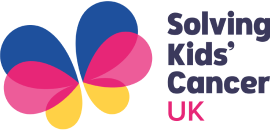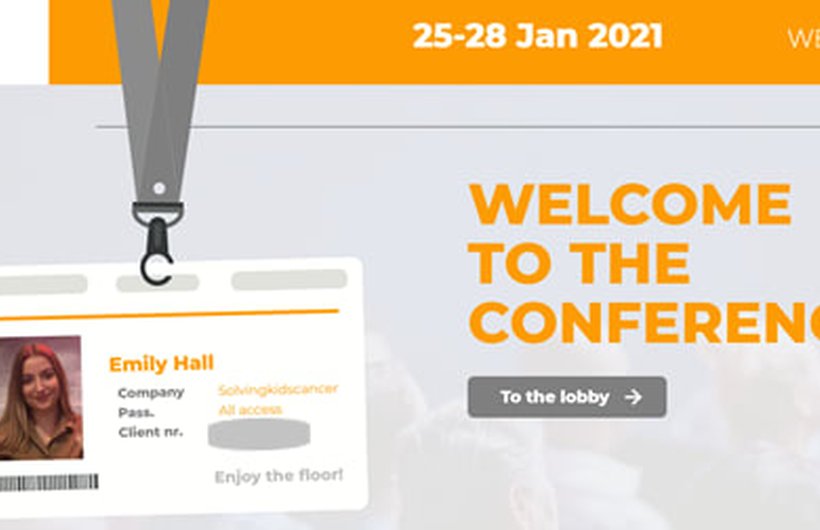Advances in Neuroblastoma Research conference 2021
Last week I had the pleasure of attending the virtual 2021 Advances in Neuroblastoma Research (ANR) conference along with Leona Knox (Head of Research), Nick Bird (Chair of Trustees) and Donna Ludwinski (Research Advocate), all from Team SKC. This biannual meeting, stalled but not stopped by the impact of COVID-19, invites researchers and clinicians worldwide who are active in the field of neuroblastoma to come together and share their latest work.
As one of the few patient-advocate groups in attendance, the team and I felt it a privilege to learn more about the latest developments in finding new treatment options, and to see the work done by our charity praised and celebrated by an international audience. This great meeting of minds which brought together over 700 researchers globally, even in the face of a pandemic, really was a testament to the dedication towards creating better futures for children diagnosed with neuroblastoma.
Key Research Areas Discussed
Targeted Therapy
Using drugs and other substances that can attack specific cancer cells is an attractive therapy pathway for neuroblastoma as it can be less harmful to normal cells than other conventional treatments. We were thrilled to see Dr Dominique Valteau-Couanet open the conference by presenting the TITAN study, driven and initiated by Solving Kids’ Cancer and made possible by the support of seven charities globally through funding. This innovative work is the first such international collaboration study for high-risk neuroblastoma patients, meaning children across Europe and North America will be treated together for the first time. The work looks at introducing a drug called lorlatinib into frontline therapy, which specifically targets tumours containing ALK mutations. These genetic mutations occur in around 14% of cases and are associated with a poorer clinical outcome.
In outlining the design of the ground-breaking trial, Dr Valtau-Couanet expressed just how significant and vital it is to develop this collaborative approach for children whose disease is classed as clinically rare. By bringing together the SIOPEN research network in Europe and the Children’s Oncology Group in North America, the trial has the potential to revolutionise future clinical work in childhood cancer, where occurrence rates often limit the capacity for trials to be launched.
Immune Therapy
Fighting neuroblastoma by using the body’s immune system is becoming more popular as a treatment avenue, with antibody therapy now a frontline option for those diagnosed with high-risk disease. During the conference we heard more about CAR-T cell therapy; a treatment which uses cells from the patient’s immune system (T cells) that are modified in the lab so that they can attack cancer cells. Dr Francesca Del Bufalo presented work on a Phase I trial of CAR-T cells designed to attack the GD2 glycolipid, which is expressed on the surface of neuroblastoma cells. The study showed these specific CAR-T cells (iC9-GD2-CAR) to have significant anti-tumour effects, and with viable options to control any severe side effects through the design of the cells.
Whilst there is still more work to be done on such treatments, this seems an exciting and attractive pathway for cases of relapsed and highly resistant neuroblastoma. Dr Del Bufalo was one of many over the course of the conference who expressed the desperate need for more options for these children who currently have such poor prognosis. With only 1 in 10 children achieving long term survival in cases of relapsed neuroblastoma, there was a profound sense amongst the research community that this is something we simply cannot accept.
Tumour Biology
One of the most challenging aspects of treating neuroblastoma is the variation in severity between patients, but this is also a reason as to why it is such a popular topic of research for professionals. Part of understanding this is to find out as much as possible about the biology of tumours and how they differ between cases of different risk. Investigating the ways in which tumours can sustain such rapid growth, Dr Ruby Pandher showed that in fact they cannot do this alone and rely on a compound called arginine which is taken from the environment around the tumour. Learning about this mechanism has led to preclinical work using a substance called BCT100 that lowers the amount of arginine in the body, therefore cutting off supply to the tumour and limiting further growth.
Dr Robbie Majzner discussed work on how tumours communicate with a patient’s immune system to avoid being destroyed by the body’s defences. The study found that tumours express a signal, labelled CD47, which instructs the patient’s body not to destroy it, despite it being a harmful entity. Again, discovering this method of tumour survival has led to development of anti-CD47 compounds which block this signal and have resulted in promising immune response of destroying neuroblastoma tumour cells in a lab setting. Both studies show that the more we strive to learn about the biological characteristics of this disease, the more doors are opened to find new treatment options.
Outcomes and Outlooks
The above is only a small insight into the many exciting studies and trials that were discussed during the three-day conference. The entire community really was buzzing with the sense that the science being created is getting closer and closer to the end of the research lifecycle, that is having better futures for all children suffering with neuroblastoma. Not only that, but it was a joy to see how much praise was given to patient-advocates and charities like ourselves, with Dr John Maris of the Children’s Hospital of Philadelphia celebrating Solving Kids’ Cancer as a ‘major philanthropic effort to create the great science being presented here’, in the session that we sponsored.
Most importantly, not one of the speakers presented their work without huge gratitude and recognition to the patients and families suffering from neuroblastoma, without whom this incredible research would not have been possible. It is easy to see that these young lives are at the heart of the process, with the sentiment that they simply do not have the time to wait, constantly recurring in many of the talks.
The message we were left with was one of hope, that we have come so far in finding better options for children with neuroblastoma, and that there is still much more untapped potential to advance the field further. The dedication of the research community is unwavering, and I am eagerly looking forward to what this leads to next May at the 2022 conference in Amsterdam!
More information about the conference, including abstracts for all studies presented, can be found on the ANR website.


